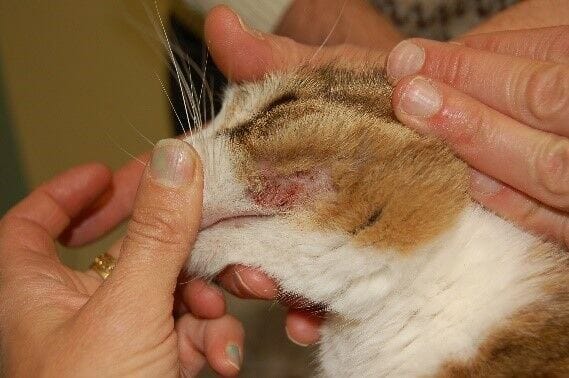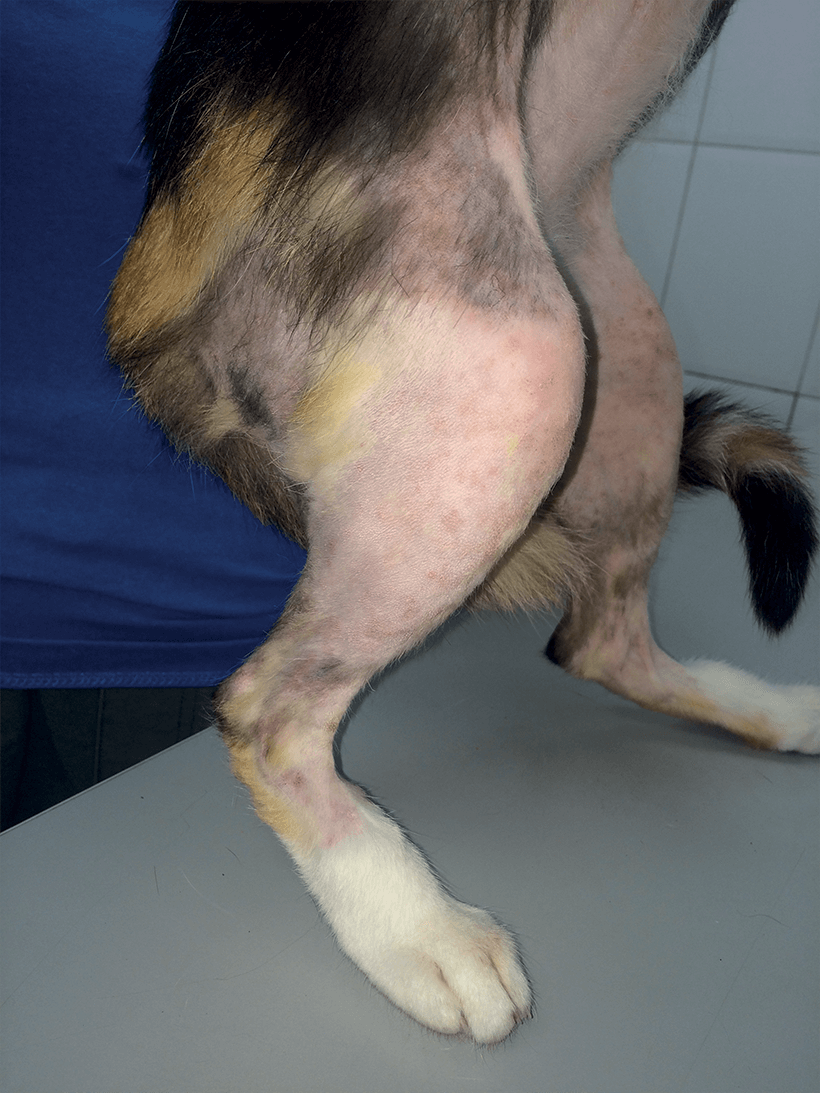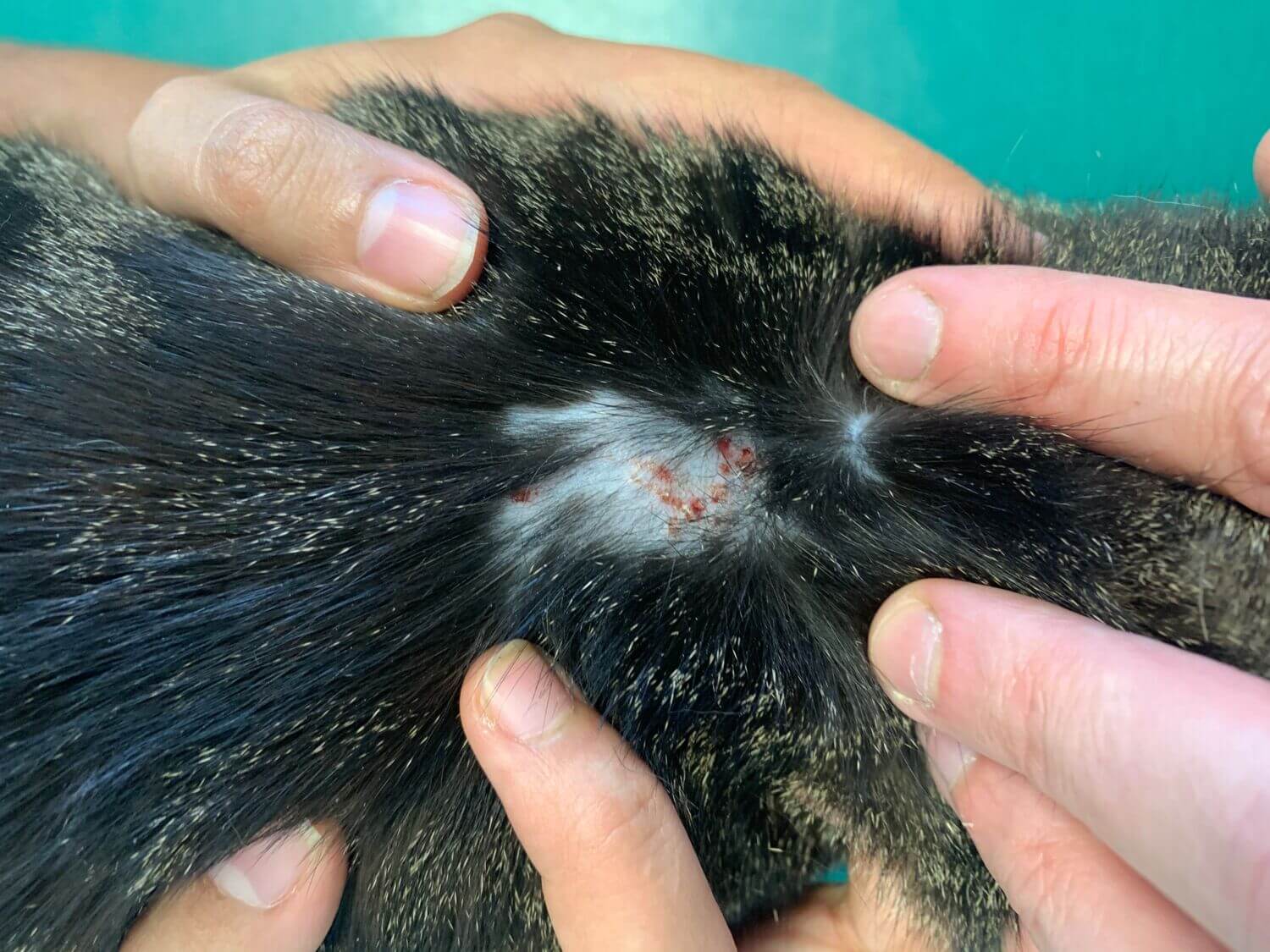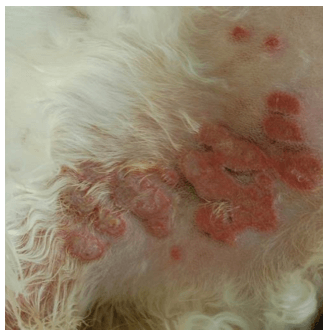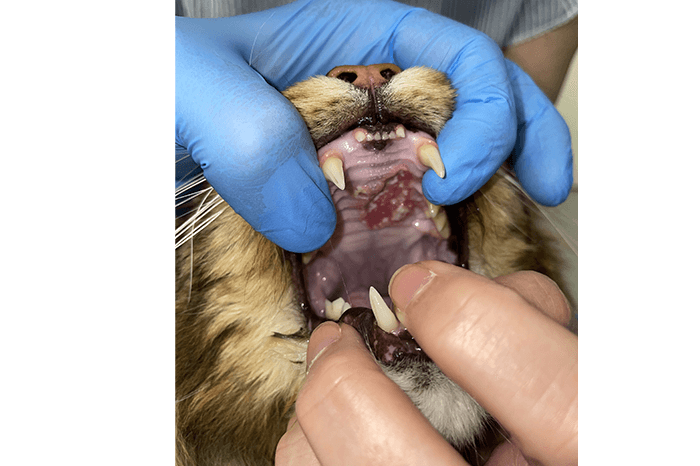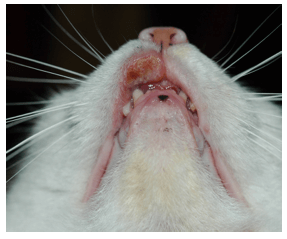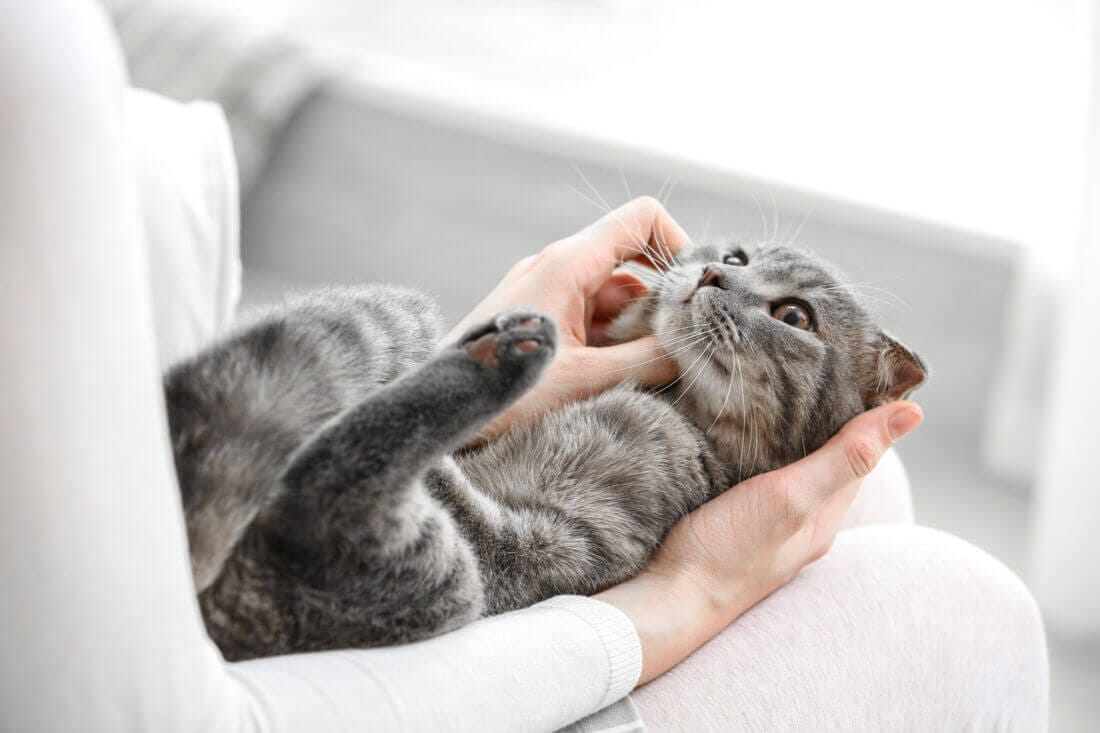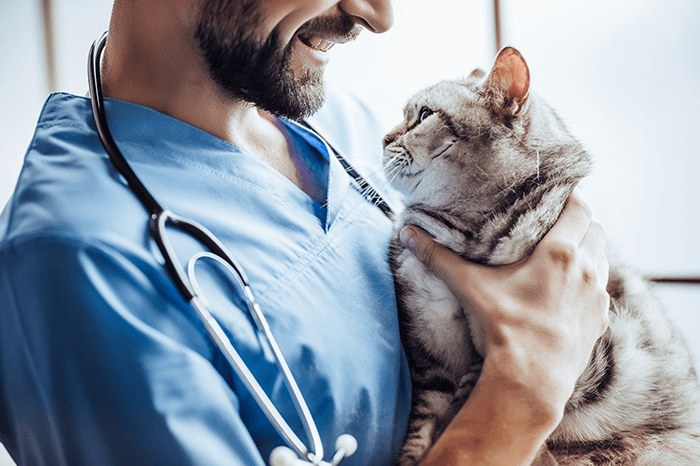All about cat allergies
Marina G VeterinarianAllergies in cats are somewhat common. It is a lifelong disease that can turn your cat’s skin miserable, alter your cat and your family quality of life. Understand the disease and how to manage it will help you bring comfort to all the family.
You may be reading this article as you’ve noticed your cat seems itchy. There are many diseases that can lead to itchiness in cats, with itchy kitties often being diagnosed with allergic conditions. Cats, just like people, can suffer from allergies to a range of things; commonly, flea allergies, food allergies or an allergy to something in the environment (e.g. pollen, grass, house dust mites etc.). This page aims to help you understand cat allergies and how to manage it.
Beyond itchiness… What are the symptoms of allergies in cats?
In humans, we usually associate allergies with respiratory symptoms like sneezing and a runny nose. Cats can also present these signs, although dermatological symptoms are much more common. Signs include:
- Itch manifestations: scratching, overgrooming, rubbing more than usual, Chewing or biting at their skin or coat
- Hair loss (alopecia)
- Red, inflamed skin
- Wounds, ulcers and crusts
In cats, allergies are distributed into 6 clinical presentations:
Head and neck pruritis
This presentation is very impressive for owners as cats have very ugly lesions with itchy, crusty, ulcerated lesions seen around the head and neck area.
Self-induced hair loss (alopecia)
Did you already notice your cat has a rough tongue? When cats overgroom, the tongue’s papillae easily break and weaken their hair, eventually leading to hair loss. Therefore, some cats can show bald patches of skin, most frequently in their abdomen and rear limbs, though other areas can be affected as well, provided they are within the tongue’s reach.
Also, keep in mind that some cats will only groom themselves when no one is around. In these “silent groomers”, bald areas can be the only hint that the cat is itchy.
Miliary dermatitis
Miliary dermatitis describes a specific skin reaction in cats; skin lesions that are just a few millimetres in length and shaped like a grain of millet.
Inflammed plaque (eosinophilic plaque)
Very pruritic (itchy) skin lesions which can appear anywhere on the body but are more commonly found on the stomach. The lesions appear as bald patches with raised areas of red skin.
Bumps / granulomas (eosinophilic granuloma)
Again, found anywhere on the body but more commonly found in the mouth, on the hindlegs and on the feet, eosinophilic granulomas are lesions of raised, thickened skin, likely with hair loss and ulceration.
Lip ulcer
These lesions are found on the edge of the upper lip of affected cats. The lip can become swollen and significantly ulcerated with a raised border.
So, what causes cat skin allergies?
The response of the immune system
Allergies are an exacerbated response of the cat’s immune system. They occur when a harmless substance, also known as an allergen, is identified as something unfamiliar and potentially harmful.
Aiming to contain and eliminate this threat, the immune system will initiate a response that results in the production of a range of inflammatory substances. These will increase blood flow to the skin, causing redness (erythema), cause local changes in the tissues, and stimulate the nerve endings, resulting in itchiness, which is the most marking characteristic of allergic disease and enhancer of the signs.
Although common in humans, histamine is not the major inflammatory substance in cats, which is why antihistamines are not as effective as they are in humans at treating allergies. However, they can be used for mild signs or as part of a multi-pronged approach.
Common allergens in cats
Depending on the type of allergen that the cat is sensitive to, we can divide allergies into three groups:
- Flea allergy dermatitis: in flea allergy dermatitis, the cat’s immune system reacts to allergens present in fleas’ saliva, which are inoculated when the cat is bitten.
- Food allergy: as the name suggests, food allergies are caused by allergens that are present in the cat´s diet. The most frequent food allergens involved are beef, fish, and chicken, although many others have been identified as triggers of an allergic response in sensitive cats.
- Atopic dermatitis: as for atopic dermatitis, this type of allergy is due to allergens that are naturally present in the cat’s environment, such as pollen, grass and dust mites, for example.
It's important to point out that, just like humans, not all allergic cats are sensitive to the same allergens! Each allergic cat has its own allergic profile, which appears to be determined by its genetic susceptibility to allergic disease and its interaction with the environment.
However, cats who do suffer from one type of allergy seem to be predisposed to other types as well.
Which cats can suffer from allergies?
Abyssinian cats seem to be predisposed to allergies, although any breed can be affected. Also, the first symptoms of allergies are usually noted within the first three years of life, but cats of any age can be affected.
How are cat allergies diagnosed?
Diagnosing allergic disease can be lengthy and challenging. It is usually based on the following:
History taking and physical examination
Clinical information provided by cat owners and information gathered during a thorough physical and dermatological exam are very important in the diagnostic process as there are a number of signs that combined are highly suggestive of allergic disease.
Exclusion of other diseases
Allergies are associated with a range of skin symptoms and lesions, but the most common sign of allergic disease is itchiness. However, besides allergies, there are other skin diseases that can cause/enhance pruritus, such as:
- Parasitic diseases, such as flea or mite infestations (Otodectes cynotis, Demodex gatoi, Notoedres cati)
- Fungal diseases, such as ringworm (dermatophytosis) or secondary yeast infections (Malassezia infection)
- Secondary bacterial infections
This means that to diagnose a cat as allergic, your vet will need to conduct some tests to rule out other diseases that can cause similar symptoms first.
Staying on top of parasite control
Updating your cat’s external parasite treatment can help vets figure out if your cat suffers from flea allergy dermatitis. Over time, fleas can become resistant to certain treatments, which is why your vet may ask you to change the product that you are using.
Starting a food trial
To figure out if it’s something in your cat’s diet that is causing its symptoms, your vet will need to conduct a dietary exclusion trial. This trial consists of providing your cat with a strict new diet for 8 to 12 weeks, and during this time, that’s the only thing it’ll be able to eat! It’s vital that this diet is fed exclusively in order for a food trial to be effective; this can be more challenging for cats that are known hunters, so do discuss this with your vet.
According to your cat´'s dietary background, your veterinarian may recommend:
- A hydrolysed diet, in which proteins are fragmented in small pieces so that the immune system can´t recognise them as an allergen
- Or a novel protein diet, which is a diet that contains proteins that the cat has never eaten before.
If your cat improves during this trial, its normal food can be reintroduced to see if it triggers an allergy flare, thus confirming a food allergy. However, if there is no improvement during the trial, it’s more likely that your cat has atopic dermatitis.
Considering environmental allergens
To determine which environmental allergens your atopic cat is sensitive to, your vet can perform blood tests (serological testing) and skin tests (intradermal testing).
How are cat allergies managed?
Allergies are chronic diseases that require long-term management. Depending on the allergens involved in each case, treatment options can vary.
Due to the complex nature of these diseases, multimodal approach is often recommended, which is a combination of the following options:
Allergen avoidance
If your cat doesn’t have contact with the allergens it’s sensitive to, the immune system will not mount the allergic response that results in itchiness and other skin lesions.
Avoiding the offending allergens can usually be achieved in cats with flea allergy dermatitis by keeping their parasite treatments up to date. This also involves treating other household pets, as well as their home environment.
Food allergic cats also benefit from changing their diet to one that does not contain the offending allergens.
However, allergen avoidance is not always possible in atopic cats due to the ubiquitous nature of environmental allergens. But you can still aim to reduce your cat’s exposure to triggering allergens, depending on which allergens your cat is sensitive to.
Topical products to bring ingredients where necessary
Sprays and lotions with steroids (under prescription) are often effective for allergic rashes. Other non-drug topical products, such as DOUXO® S3 CALM with a high concentration of Ophytrium, also help reduce irritation and soothe the skin, keeping it hydrated and restoring its barrier function while limiting the adhesion of potentially pathogen bacteria such as Staphylococcus.
Drugs to manage pruritus and inflammation
Given that itchiness significantly impairs cats’ welfare, pruritus relief is the mainstay of allergy management.
There are several medications that can be used to reduce itchiness, such as steroids, cyclosporine, essential fatty acids. You vet will choose the best option for your furry friend.
Desensitisation treatment to address the cause
Immunotherapy, commonly known as allergy shots, can be used to manage the atopic cat. This treatment consists of giving increasing doses of the allergen the cat is sensitive to over a period of time, desensitising the cat´s immune system.
The goal of immunotherapy is to re-programme the immune system, thus preventing allergy symptoms from developing every time the cat is exposed to the allergen.
This treatment involves periodic vet visits over an extended period of time (months), and results take some time to be noted.
Depending on your cat's personality and clinical signs, your vet will recommend which treatment options are most effective so that your cat can feel comfortable and itch-free again.


